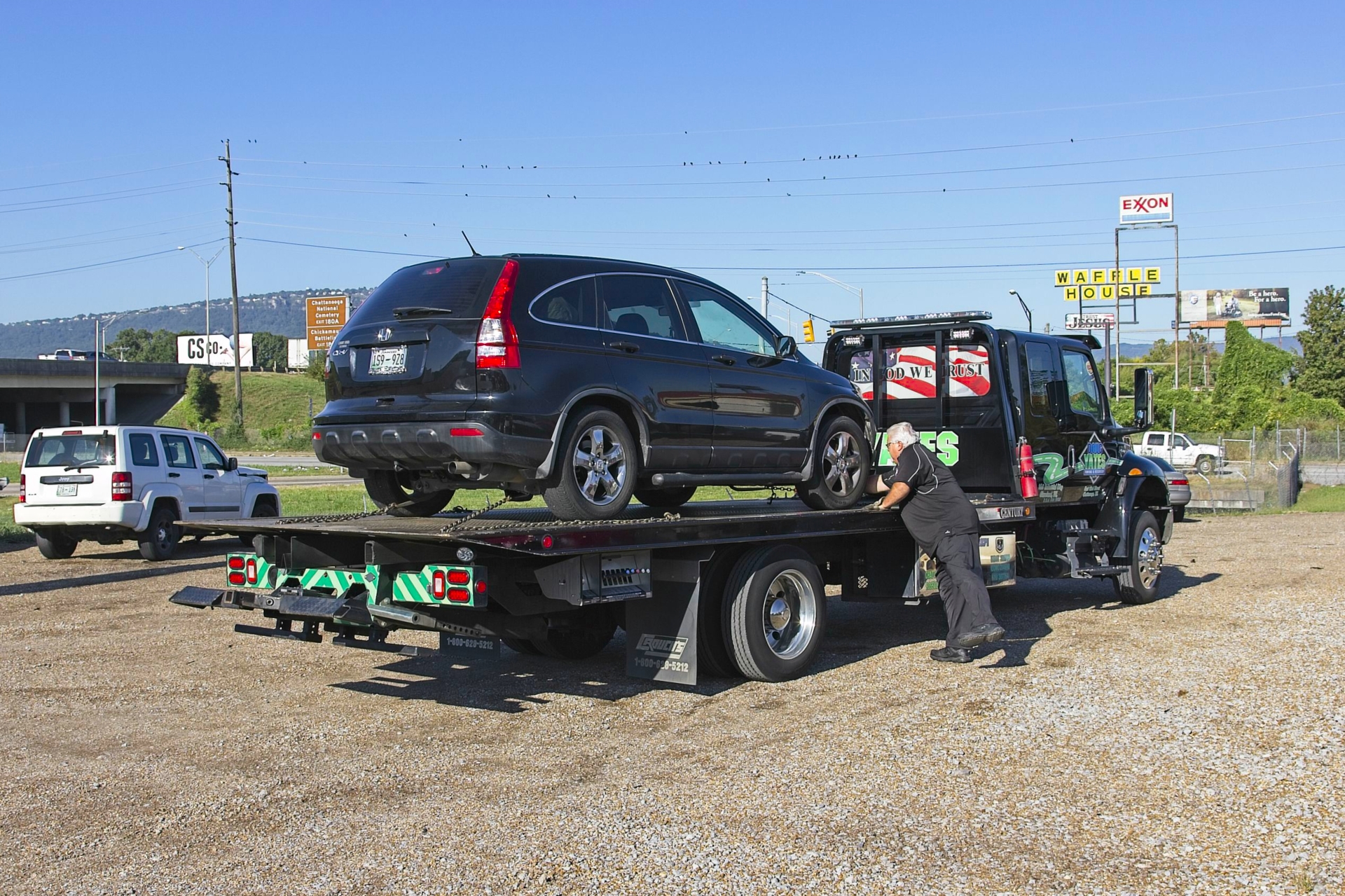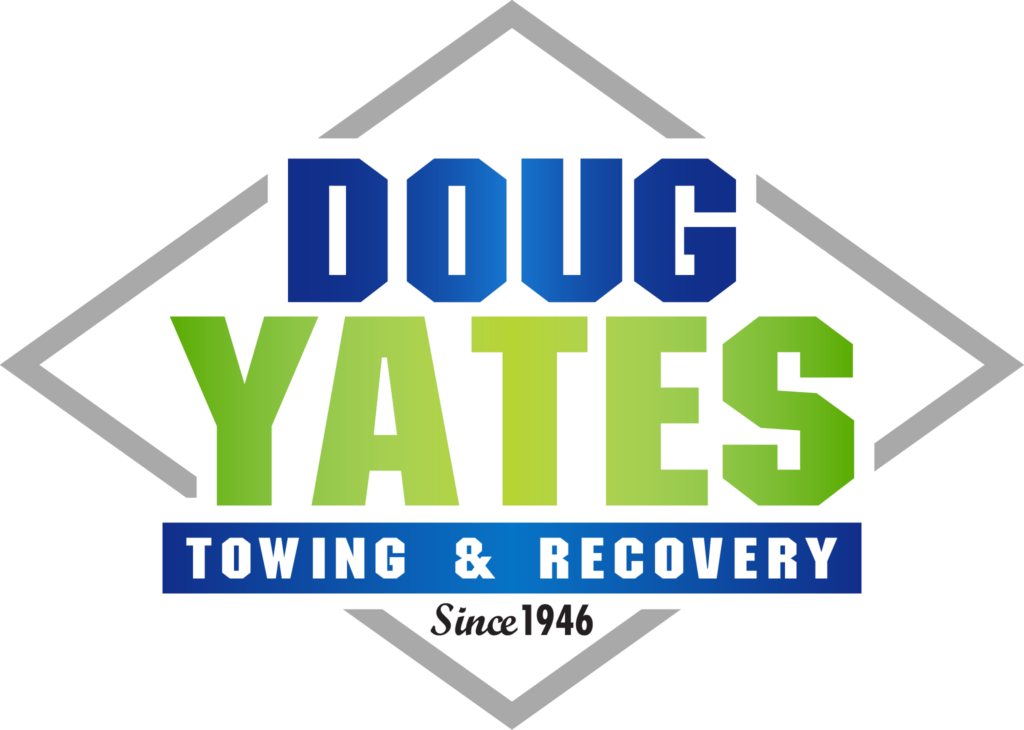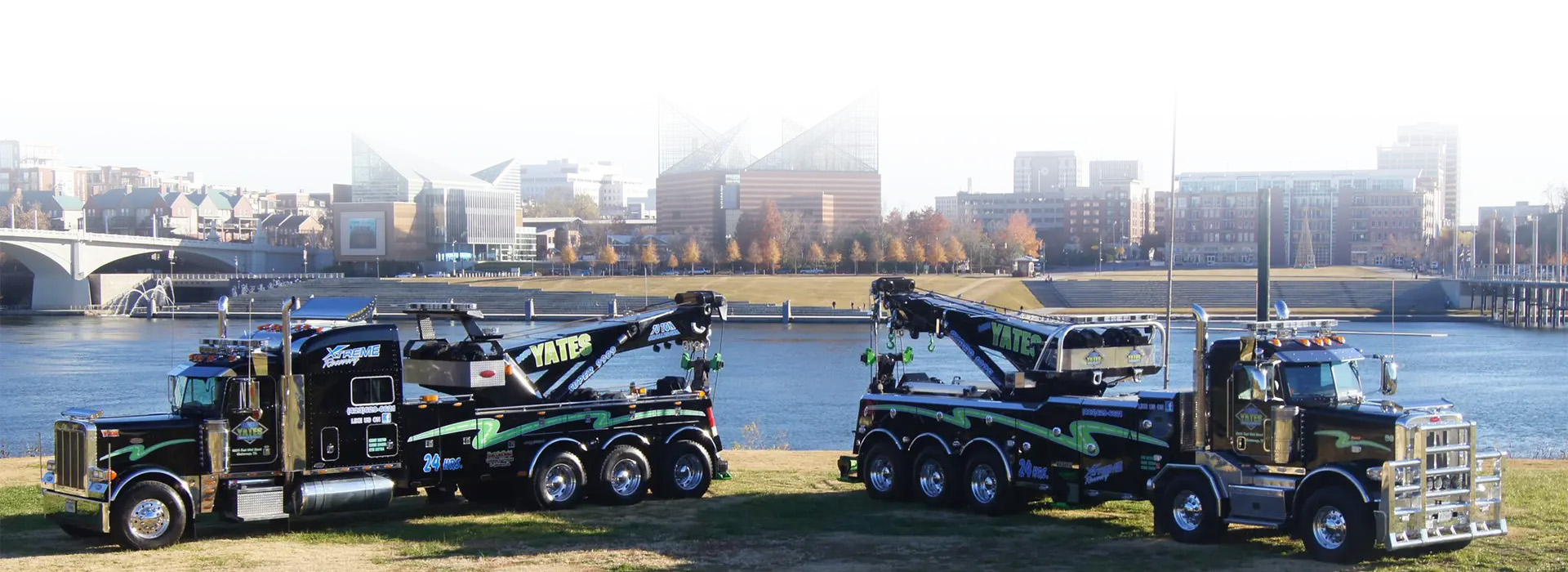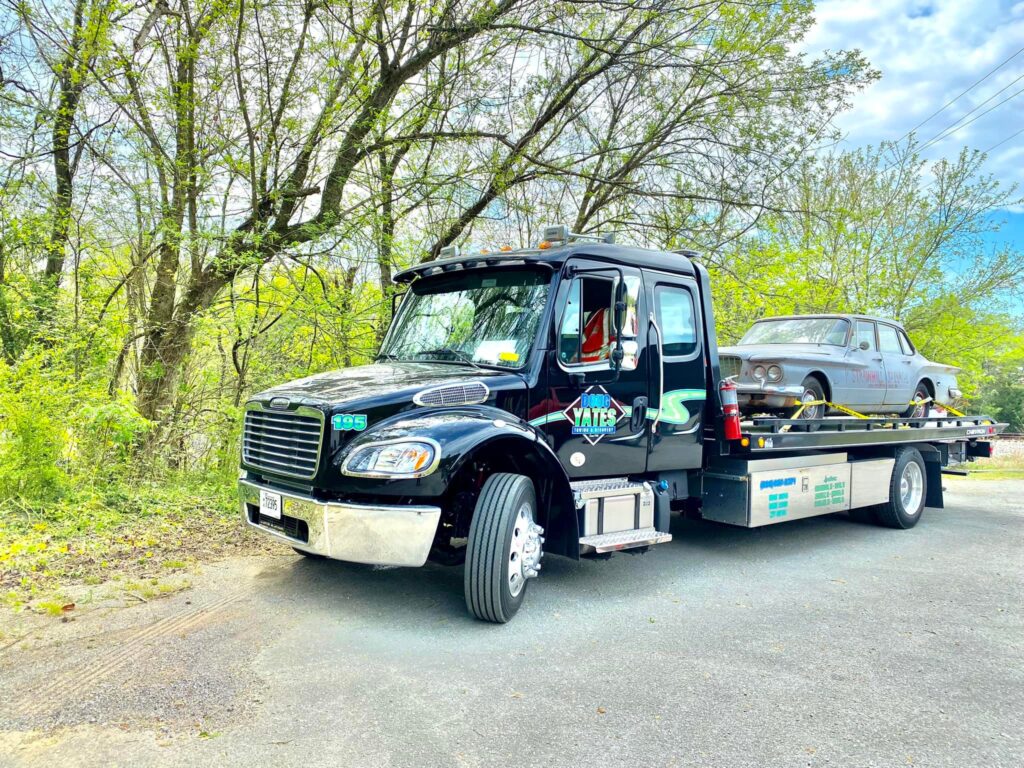Car breakdowns can happen at the most inconvenient times, leaving you stranded on the side of the road waiting for a tow truck. While waiting for professional help is often the safest option, there are instances where knowing a few emergency auto repair solutions can get you back on the road temporarily. Whether it’s a flat tire, a dead battery, or an overheating engine, having some basic knowledge and tools can be a lifesaver in such situations. Here, Doug Yates Towing & Recovery discusses some essential emergency auto repair solutions you need to know before a tow truck arrives.

Flat Tire
A flat tire is one of the most common issues drivers encounter. If you find yourself with a flat tire, follow these steps:
- Safety First: Pull over to a safe location away from traffic.
- Gather Tools: Locate your spare tire, jack, and lug wrench.
- Change the Tire: Loosen the lug nuts, lift the car with the jack, remove the lug nuts and flat tire, mount the spare tire, tighten the lug nuts, and lower the car.
- Check the Spare: Ensure the spare tire is properly inflated and in good condition.
Dead Battery
A dead battery can leave you stranded, but you might be able to jump-start your vehicle with these steps:
- Find Jumper Cables: Ask nearby motorists for jumper cables or call Doug Yates Towing and emergency roadside assistance.
- Position Vehicles: Position the working vehicle close to yours, facing each other.
- Connect Cables: Attach the red clamp to the positive terminal of your battery and the other red clamp to the positive terminal of the working battery. Then, attach the black clamp to the negative terminal of the working battery and the other black clamp to a metal surface on your car (away from the battery).
- Start the Engine: Start the engine of the working vehicle and let it run for a few minutes. Then, try starting your vehicle.
- Seek Professional Help: If jump-starting doesn’t work, your battery might be beyond repair, and you’ll need to wait for Doug Yates Towing or call for a replacement battery.
Overheating Engine
An overheating engine can cause severe damage if not addressed promptly. Here’s what to do:
- Pull Over Safely: Turn off the engine and wait for it to cool down. Do not attempt to open the radiator cap while the engine is hot.
- Check Coolant Level: Once the engine has cooled, check the coolant level in the reservoir. If it’s low, add coolant or water.
- Inspect for Leaks: Look for any signs of coolant leaks under the car.
- Check Radiator Cap: If the radiator cap is cool to the touch, carefully open it and check the coolant level. Add coolant if necessary.
- Continue Driving Cautiously: If the engine temperature returns to normal, you may continue driving, but keep an eye on the temperature gauge. If it starts to overheat again, pull over immediately.
Fuel Issues
Running out of fuel is an easily preventable problem, but if it happens, here’s what you can do:
- Assess the Situation: Determine if you’re in a safe location. If not, call for roadside assistance.
- Check for Fuel: If you have a fuel gauge, verify if you’re truly out of fuel. Sometimes gauges can be inaccurate.
- Seek Assistance: If you’re unable to walk to the nearest gas station, call Doug Yates roadside assistance or a friend to bring you fuel.
- Avoid Future Incidents: Keep an eye on your fuel gauge and refuel before it reaches empty. Consider using smartphone apps that alert you when it’s time to refuel.
Minor Electrical Problems
Certain electrical issues can be temporarily resolved with some basic troubleshooting:
- Check Fuses: If your car’s electrical components (e.g., lights, radio) stop working, check the fuses. A blown fuse can often be replaced easily.
- Inspect Battery Connections: Loose or corroded battery connections can cause electrical problems. Tighten connections and clean off any corrosion.
- Restart the Engine: Sometimes, turning the engine off and back on can reset minor electrical glitches.
Temporary Fixes
In some cases, you might need to perform temporary repairs to get your vehicle to a safer location:
- Duct Tape: Duct tape can temporarily patch small leaks in hoses or hold together loose parts until you can reach a local auto repair shop.
- Radiator Leak Sealant: If you suspect a radiator leak, pour a bottle of radiator leak sealant into the radiator to temporarily seal the leak.
- Tire Sealant: Tire sealant can temporarily repair small punctures in tires, allowing you to drive to a nearby service station for a proper repair or replacement.

While these emergency auto repair solutions can be helpful in getting you back on the road temporarily, it’s crucial to remember that they are not permanent fixes. Always prioritize safety and seek professional assistance whenever possible. Additionally, regular maintenance and inspections can help prevent breakdowns and reduce the likelihood of encountering these issues while driving. With the right knowledge and tools, you can navigate unexpected car troubles with confidence until Doug Yates Towing & Recovery arrives.

